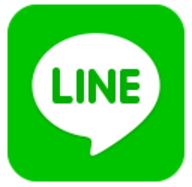Line (Application)
|
Line (known as LINE) is a free, instant messaging application that supports sharing of pictures & videos, stickers, voice & video calls. It is available on mobile devices and PCs. Particularly popular in East Asia, it boasts having over 600 million users across the globe [1] and 216 million monthly users. Line makes most of its revenue on its stickers services through its sticker store as well as LINE games. Creators are allowed to sell their own
As of February 2016, LINE is the fastest-growing global social media.[2]. During Q4 of 2015, LINE had a monthly user count of 215 million users. It is often compared to KakaoTalk, WeChat, WhatsApp, and Facebook Messenger. As of February 2016, the application has surpassed its competitors to being the most commonly used mobile application in Taiwan [3]. The popularity of LINE reflects the general increase in social media and communication technologies on mobile devices.
Through the application, users can purchase stickers and themes.
History
LINE was created under and owned by the South Korean company Next Human Network (NHN), now Naver Corporation and NHN Entertainment.[4] However, LINE is based in Japan, where it first introduced the mobile device to the market. It was created in response to the Tohoku tsunami and earthquake of 2011.During the Tohoku tsunami and earthquake, many telecommunication channels were down. LINE was developed by NHN and played a role in allowing people to communicate through Wifi services still in tact.[5] In an effort to expand, LINE Plus Corporation was created as a subsidiary of LINE Corporation. [6] In July 2014, Naver corporation introduced LINE to the global market.[7] This was partially due to the success the Naver search engine found after becoming more popular than Google's service.
During July 2015, Naver unveiled a lite version of the application specifically for emerging mobile markets.[8] This is particularly for devices and countries with weak Wifi infrastructure, which makes the original version of LINE more difficult and costly to use. The lite version accommodates these needs.
On February 10th, 2016, Naver won the right to own the domain name "www.line.co.kr", after court ruling that the opposing party was misusing the site. [9]
On February 16th, 2016, LINE announced the termination of their internet streaming music player, MixRadio. [10]
Features
Line's sticker store also has content from official and unofficial artists. The LINE sticker characters include Brown, Cony, Moon, and James, and are often depicted in amusing situations.[11]
Over the years, LINE has added several different features and has grown immensely. One of LINE features is a location sharing addition.[12] this would allow users to check in with their locations, servicing parents and children in particular. In addition, LINE in 2015 also added a Chrome extension version of the application to allow users to chat on desktop devices.[13] LINE introduced end to end message encryption to better support the needs of its users.[14] In February 2016, LINE introduced a partnership with the Indonesian motorcycle taxi company, Go-Jek, allowing users to order taxis through the application [15].
Ethical Issues
In 2014, LINE introduced a streaming service called LINE Music.[16] This service allows users to pay a flat fee and listen to unlimited amounts of music, with a catalog of over 1 million songs. This raises similar problems to the issues surrounding Spotify in particular, another music streaming application. LINE was not the first mobile streaming application on the Japanese market.
Line's sticker store contains products from artists and designers from all over the world. These stickers include themes with LGBT characters. The Indonesian president's, Joko Widodo, administration required messaging apps to remove these stickers on their site.[17]
In July 2015, the Chinese government blocked Line from its market. However, much of its merchandise can be purchased at SOHO, a Chinese department store.[18]
Popular Culture
In 2014, as part of an advertising campaign, LINE created a 3 episode mini-series. The story was about a South Korean man and a Chinese woman who fall in love while communicating over line. While this was an advertisement, it became an extremely popular media.
References
- ↑ LINE in Google Store
- ↑ Line is The Wall Street Journal's fastest-growing platform
- ↑ Line tops III app usage survey in Taiwan
- ↑ Naver Company Info
- ↑ [1]
- ↑ [2]
- ↑ After beating Google, Korea's Naver goes global with messaging app Line
- ↑ [3]
- ↑ Naver wins suit over domain name ‘www.line.co.kr’
- ↑ [4]
- ↑ LINE Official Characters
- ↑ [5]
- ↑ [6]
- ↑ Line Adds End-To-End Encryption To Its Mobile Messaging App
- ↑ You Can Now Hail A Go-Jek Taxi From The Line App
- ↑ [http://blogs.wsj.com/japanrealtime/2015/06/11/line-bets-on-streaming-music-in-japan/
- ↑ Whatsapp, Line warned over same-sex emoticons in Indonesia
- ↑ One year after the government banned its chat app, Line is still in China—selling lattes and tote bags

